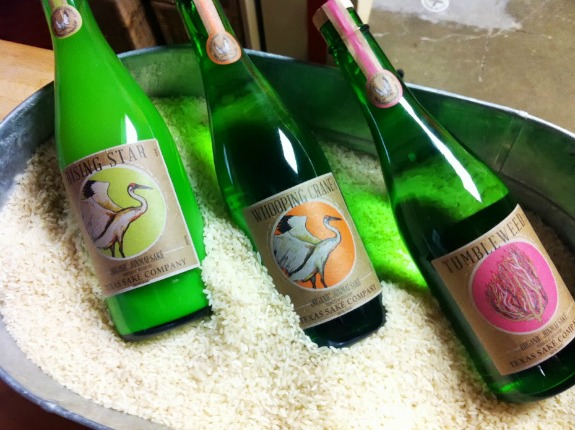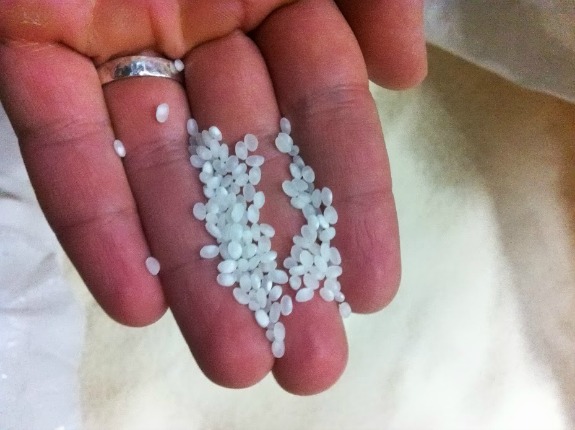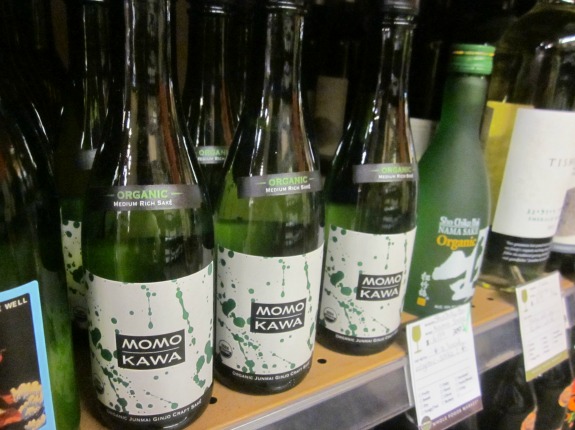Can You Taste the Difference Between American and Japanese Sake?
Sake has been brewed for thousands of years in Japan. Now, American brewers are starting to make sake—but is it any good?
/https://tf-cmsv2-smithsonianmag-media.s3.amazonaws.com/filer/20130820090048photo05.jpg)
Sake plays as important a role in Japanese food culture as wine does in Europe. Polishing rice kernels into white pearls, converting their starch into sugar with a mold called koji and fermenting the sugar into alcohol has been a commercial trade for more than 2,000 years on the islands of Japan. Today, some Japanese breweries are centuries old, and the culturally ingrained knowledge, the varieties of rice and the generations of tradition embedded in Japanese sake production provide modern brewers with a rock-solid foundation upon which to base their craft.
Yet sake brewing is catching on in the United States and Canada, where there are now about a half-dozen microbreweries, plus a few mid-sized ones.
“Most American sakes are good, well made and clean tasting,” says John Gauntner, a sake educator and writer originally from Ohio and now probably the world’s most sake-savvy non-Japanese citizen. “But in Japanese sake, you tend to get more depth.”
Gauntner describes Japanese sakes as having “layers, and development, and profiles of flavor,” whereas North American sakes “tends to be more one-dimensional.” Gauntner says the lack of a variety of great, sake-specific rice cultivars in America is a major reason sake here has, sometimes, lacked in character.
But American sake is getting better. At True Sake in San Francisco, one of just four sake-only retail shops in America, owner Beau Timken says that until about three years ago the majority of American sake was “uneventful, watery, flat.” For this reason, Timken—whose shop features more than 200 labels—has never carried an American-made sake.
However, American brewers are honing their skills, he says, and it shows in their product—especially that made by the SakeOne brewery in Portland, Oregon.
“Those guys have made huge advances,” Timken says. “Of all the breweries on this continent, SakeOne is probably the best.”
SakeOne’s Momokawa brand has made the strongest impression on Timken, who plans to begin featuring it soon. Not only is Momokawa good, Timken adds; it’s also affordable—about $13 a bottle. Most imported sake, on the other hand, costs upwards of $30 per 720-milliliter bottle (a standard Japanese size).
“Sake is freaking expensive,” he says, noting, too, that the price on Japanese bottles has been escalating in recent years due to economic instability. “I need value in my shop, and that’s where the locally made sake is gaining.”
Timken also applauds Sho Chiku Bai, made in Berkeley by the Takara sake company, a satellite branch of a Japanese sake brewing corporation. A bottle of the Sho Chiku Bai “junmai classic”—Takara’s entry-level sake—goes for $6.50. The brand includes several other styles, and Timken may be selling them “down the road,” he says—but Momokawa is first in line.
Other experts have been similarly impressed by America’s expanding sake culture. Chris Johnson, a certified sake sommelier in New York City who goes by the industry nickname The Sake Ninja, notes that Japan has 2,500 years of collective sake-making experience, compared with about 25 years in the United States. Yet, “American sake is getting extremely good,” says Johnson, who also names Momokawa as the best, and most affordable, American brand available.
Another brewery of note, according to Johnson, is Moto-I, a restaurant in Minneapolis that operates like a brewpub, with draft house-made sake sold onsite. Unfortunately, the sake—an unpasteurized style called namazake—is only available to the restaurant’s patrons.

The three sakes from the Texas Sake Company—Rising Star, Whooping Crane and Tumbleweed—evoke the landscape of the American desert. Photo courtesy of Texas Sake Company.
Johnson also commends the Texas Sake Company, whose bottles are currently only available within Texas but will soon be distributed in New York City. The sake produced here is very all-American, made with local rice and Texas flair. Brewer Yoed Anis uses a unique rice cultivar called shinriki, introduced from Japan to Texas in the early 1900s. Anis barely polishes the kernels before fermentation—a diversion from the traditional approach of milling away at least 30 percent, and sometimes more than 50 percent, of the rice kernel’s outer layers before brewing. The outer layers of a rice kernel contain oils and fats that can produce what some call “off flavors,” and, generally, the more milling of the rice, the cleaner-tasting—and more expensive—the sake.
“By leaving some of that outer layer of the rice, we retain the character of the rice, rather than just getting pure starch and pure sugar,” Anis explains. He adds that Japanese brewers frequently brew to a higher alcohol percentage—18 or 20—then cut it down with water, further clarifying both taste and appearance. Anis, however, brews to about 15 percent and keeps it there—no water added.
Johnson says Anis’ method makes for heavy, robust aromatics—a great complement to local cuisine.
“He’s got a really rustic flavor that pairs well to the barbecued foods of the Texas area,” Johnson says.

These shinriki rice kernels at the Texas Sake Company have been milled down to 80 percent of their size at harvest, whereas most Japanese breweries mill their rice much more aggressively. The Texan method leads to heavier, more robust aromatics. Photo courtesy of Texas Sake Company.
Another brewer, Jonathan Robinson of Ben’s American Sake in Asheville, North Carolina, has said he plans to age sake in bourbon barrels.
“That would be a very untraditional style, but it could be an amazing thing,” Johnson notes. “That flavor profile might really work well.”
But Rick Smith, who, with his wife, owns and operates the Sakaya sake shop in Manhattan, says he remains relatively unimpressed by North American sake. He has tasted countless sakes and he says those made in Japan tend to have complexity, subtleties and nuances absent in sake from America and Canada, where at least two facilities are now in operation. Like Timken at San Francisco’s True Sake, Smith has never carried an American brand. But unlike Timken, Smith has no plans to start carrying them. Smith believes that North American brewers lack the collective knowledge and the quality of ingredients necessary to making great sake.
“American sake is in its infancy,” he says. “To compare it to Japanese sake is like comparing an embryo to a fully grown adult.” Smith says American and Canadian brewers regularly offer him samples to taste—and he is open to the possibility that, someday, one of them “will walk in here with a sake that amazes me.”
Sake is a beverage with a unique set of flavor components. SakeOne recently produced a copyrighted sake-tasting aroma wheel—a concept innovated years ago as a vocabulary-inducing tool for wine tasting. Listed around the perimeter of the sake wheel are such aromas and flavors as steamed rice, wet leaves, pine, green tea, celery, hay and ginger. Many newcomers to sake, Timken points out, don’t like the stuff at first taste.
“Sake is like tequila that way,” he says. “Everyone has had a bad one, and instead of saying, ‘Sake isn’t for me,’ you need to give it a second chance.”
So, what style should one serve to a party of sake skeptics? Timken suggests going with a nigori sake, that aromatic style often served in sushi bars, unfiltered and cloudy white. “Nigori is easy, sweet and creamy,” he says. “Everyone loves it.”
And if you want a deal, buy American. Timken recommends the nigori sakes from Sho Chiku Bai. Momokawa also makes a nigori.
“But nigori is really just a stepping stone to filtered sake, which is drier, more complex and subtle,” Timken adds.
Johnson says he is open to the idea of sake-based cocktails—often called “sake-tinis”—as a vehicle for introducing the concept and flavors of sake to newcomers. The goal, of course, is to have them eventually drinking pure, unadulterated sake. Smith, meanwhile, suggests going big and knocking a newbie’s socks off with the Dassai 50 Junmai Daiginjo. A bottle of this clean and clear Japanese sake is $37, which Smith says “is relatively inexpensive for top-of-the-line sake.”
He adds, “And if you pay $100 for a bottle, you’ll get something really amazing.”
/https://tf-cmsv2-smithsonianmag-media.s3.amazonaws.com/accounts/headshot/Off-Road-alastair-bland-240.jpg)

/https://tf-cmsv2-smithsonianmag-media.s3.amazonaws.com/accounts/headshot/Off-Road-alastair-bland-240.jpg)